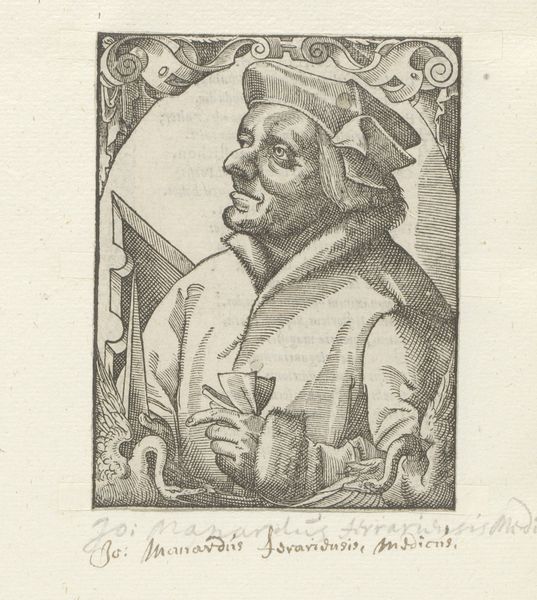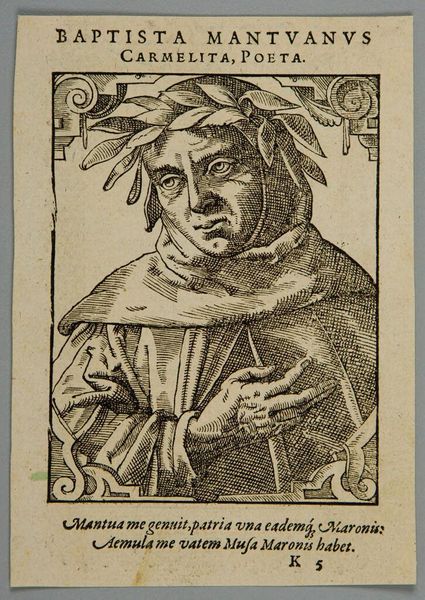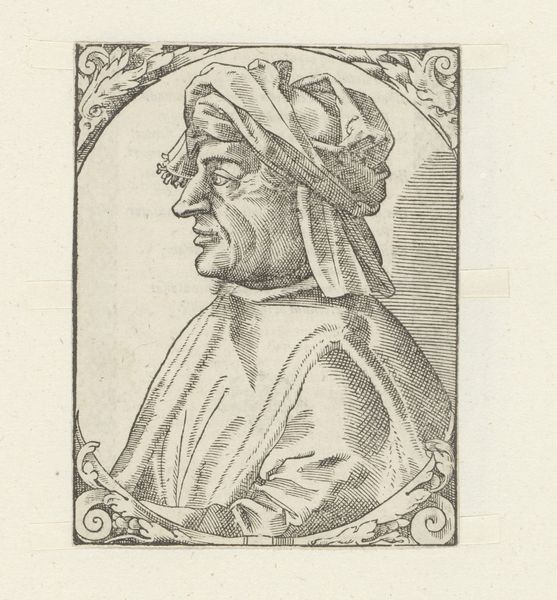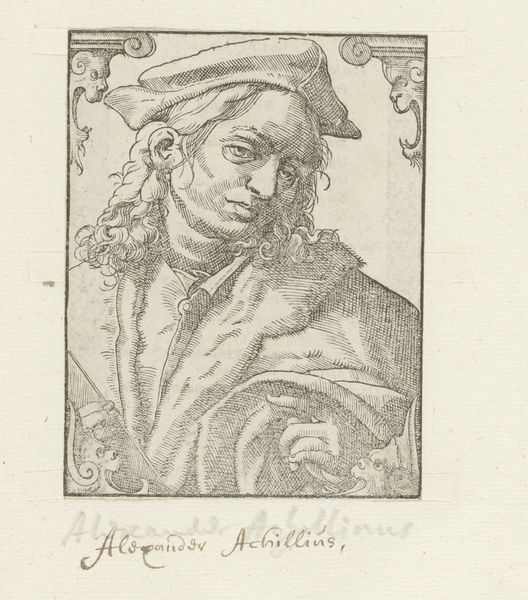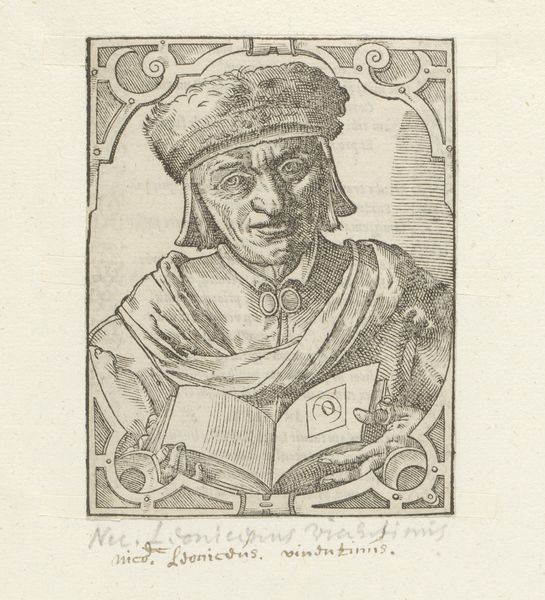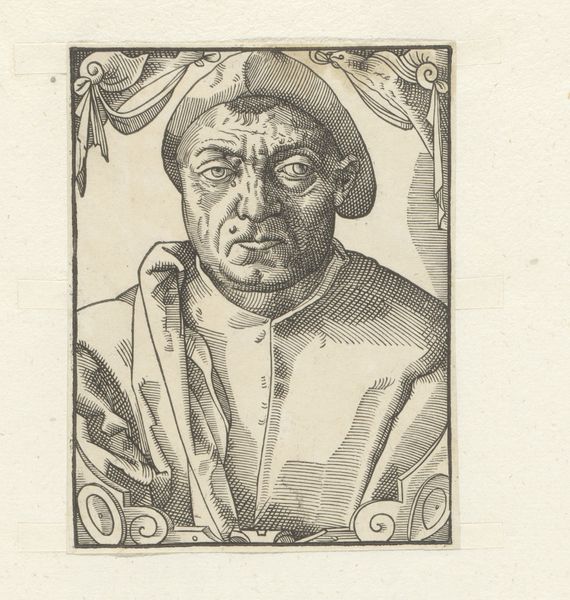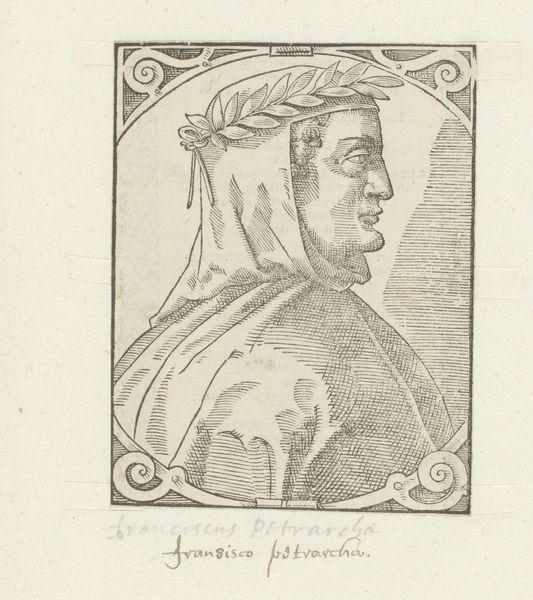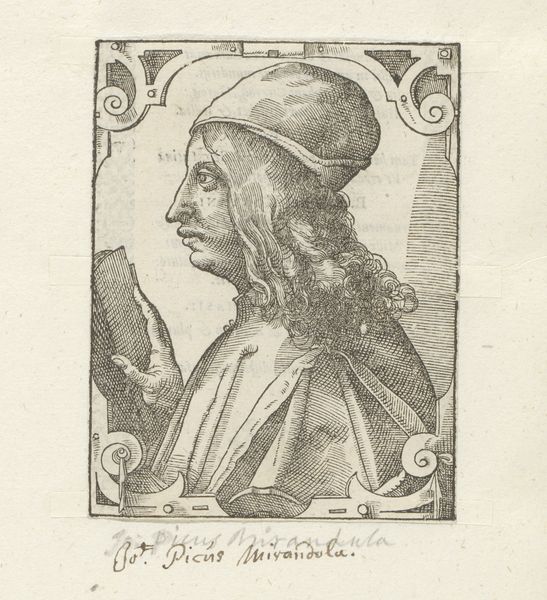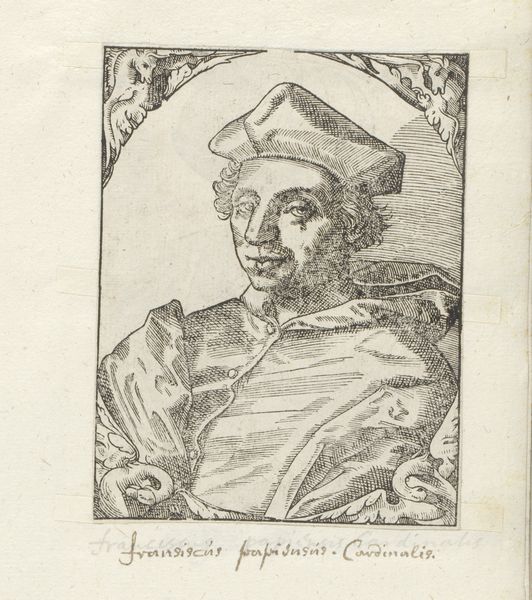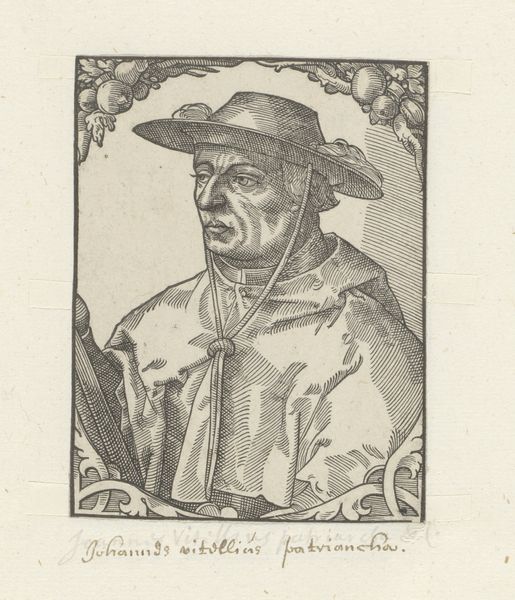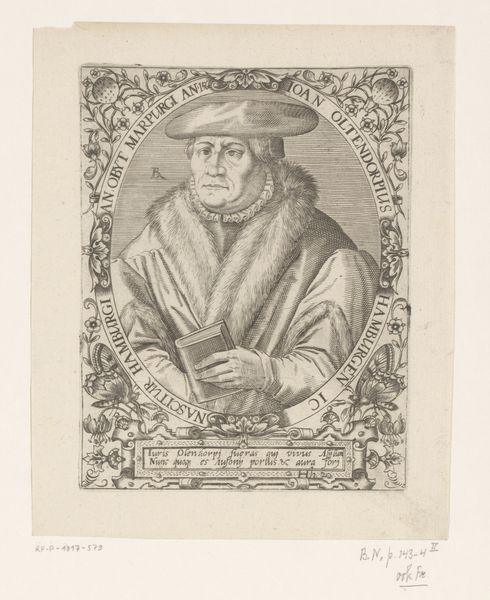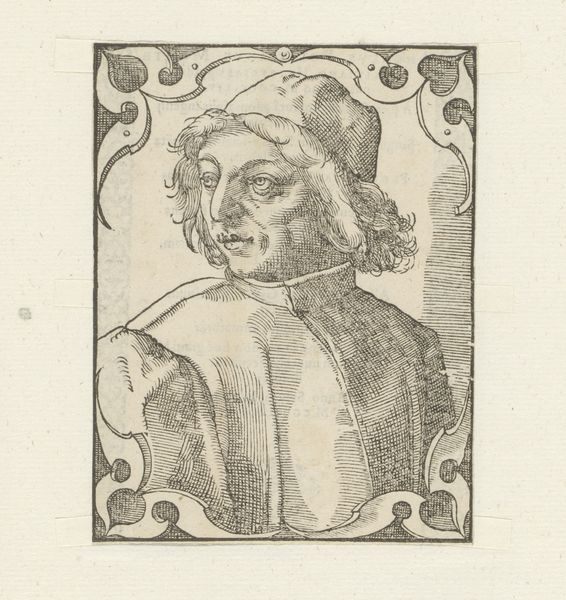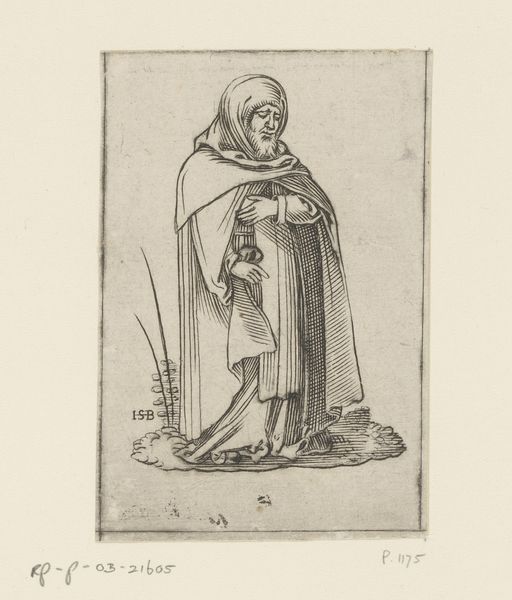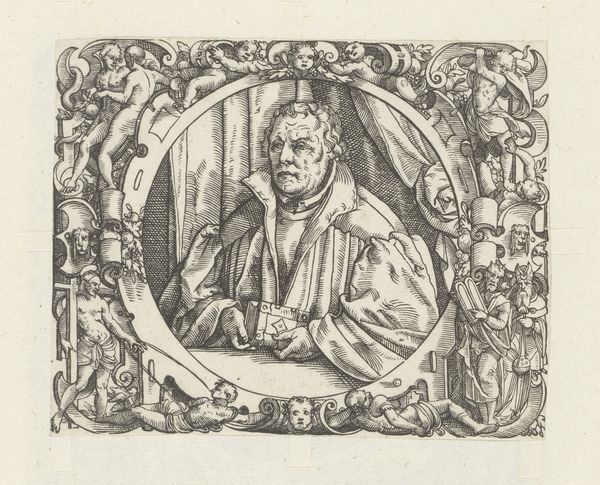
print, engraving
#
portrait
# print
#
old engraving style
#
mannerism
#
figuration
#
11_renaissance
#
history-painting
#
engraving
Dimensions: height 108 mm, width 83 mm
Copyright: Rijks Museum: Open Domain
Editor: Here we have an engraving from between 1549 and 1577 titled *Portret van Baptista Mantuanus*, by an anonymous artist. I’m immediately struck by the subject’s intense gaze. What do you see in this piece? Curator: Beyond the individual, consider the historical context. This is a portrait of Baptista Mantuanus, a Carmelite reformer. Think about the power structures at play during the Renaissance: The Church, the rise of humanism, and individual identity. Editor: So, the artist is intentionally depicting a reformer? Curator: Possibly. Or consider what it meant to create and circulate such a portrait. Was this intended to celebrate Mantuanus, or was it part of a larger discourse, perhaps even a critique, of religious authority? Note his laurel wreath and book, which elevate his status but could also subtly undermine the exclusive domain of religious authority. Editor: I hadn't considered it that way, thinking of the circulation of imagery and the statement of creating such work during those periods. Does his clothing play a role? Curator: Absolutely. His Carmelite habit is contrasted with symbols of classical learning and accomplishment. Ask yourself, what did it mean to depict a religious figure in this way during the Renaissance? Was it a challenge to the established order, a commentary on the role of religion, or something else entirely? Editor: It's like a dialogue between different aspects of society all captured in one image. I learned how a single portrait can contain layers of social and political context. Curator: Exactly. Looking beyond the aesthetic surface allows us to really understand art. There is always something to discover by viewing historical artworks with a modern sensibility and new ideas about class, race, gender and lived experiences.
Comments
No comments
Be the first to comment and join the conversation on the ultimate creative platform.
